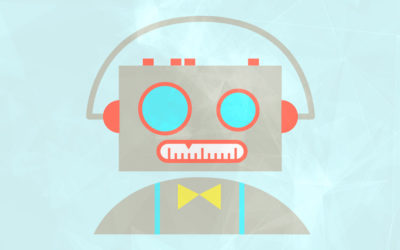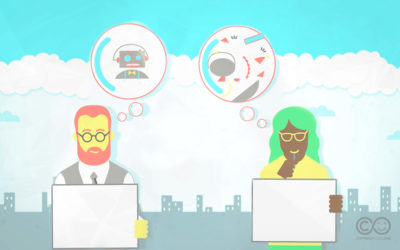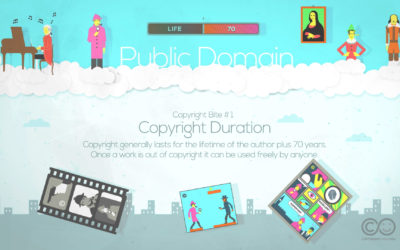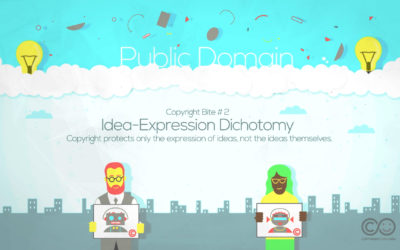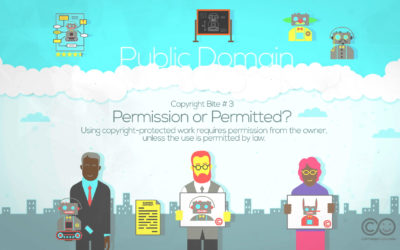Copyright Bite #2.4
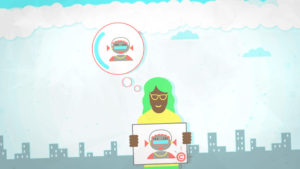 Jane is also an illustrator. She sees Dick’s drawing of a robot and is inspired. Robots are cool, thinks Jane, and she decides to draw her own. Her idea is that the robot should be made up of simple geometric shapes, but using shapes and features different from Dick’s robot.
Jane is also an illustrator. She sees Dick’s drawing of a robot and is inspired. Robots are cool, thinks Jane, and she decides to draw her own. Her idea is that the robot should be made up of simple geometric shapes, but using shapes and features different from Dick’s robot. The ideas, the building blocks and basic shapes and elements that both Dick and Jane have used in drawing their robots remain in the public domain, free for anyone to use in creating their own robots, or dinosaurs or even robot-dinosaurs.
The ideas, the building blocks and basic shapes and elements that both Dick and Jane have used in drawing their robots remain in the public domain, free for anyone to use in creating their own robots, or dinosaurs or even robot-dinosaurs.More from Bite #2
Copyright Bite #2.1
There are many things that copyright does not protect. It does not protect information or facts, principles, concepts or ideas.
Copyright Bite #2.2
In the video, Dick, an illustrator, decides to draw a robot. Robots are cool, thinks Dick. His idea is that the robot should be made up of simple geometric shapes, but with a mouth like a thermometer or a ruler.
Copyright Bite #2.3
Copyright protects only the expression of ideas, not the ideas themselves. In the UK the law also typically requires that your work is fixed in some tangible form before it can be copyright-protected.
More Copyright Bites
Copyright Bite #1
Copyright Bite #1 considers how long copyright lasts and what it means to say that a work is protected by copyright or in the public domain.
Copyright Bite #2
Copyright Bite #2 explores how copyright protects only the expression of ideas and not ideas themselves.
Copyright Bite #3
Copyright Bite #3 considers how you can lawfully make use of, or borrow from, works that are still in copyright, but without having to ask for permission or make payment to the copyright owner.
Copyright Bites Credits
Copyright Bites: Credits and Acknowledgements


